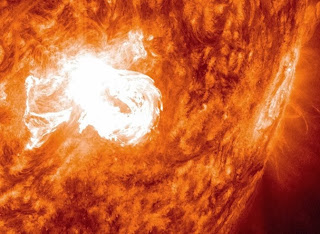U.S. astronauts once again will travel to and from the International Space Station from the United States on American spacecraft under groundbreaking contracts NASA announced Tuesday. The agency unveiled its selection of Boeing and SpaceX to transport U.S. crews to and from the space station using their CST-100 and Crew Dragon spacecraft, respectively, with a goal of ending the nation’s sole reliance on Russia in 2017.
"From day one, the Obama Administration made clear that the greatest nation on Earth should not be dependent on other nations to get into space," NASA Administrator Charlie Bolden said at the agency's Kennedy Space Center in Florida. "Thanks to the leadership of President Obama, the hard work of our NASA and industry teams, and support from Congress, today we are one step closer to launching our astronauts from U.S. soil on American spacecraft and ending the nation’s sole reliance on Russia by 2017. Turning over low-Earth orbit transportation to private industry will also allow NASA to focus on an even more ambitious mission – sending humans to Mars."
These Commercial Crew Transportation Capability (CCtCap) contracts are designed to complete the NASA certification for human space transportation systems capable of carrying people into orbit. Once certification is complete, NASA plans to use these systems to ferry astronauts to the International Space Station and return them safely to Earth.
The companies selected to provide this transportation capability and the maximum potential value of their FAR-based firm fixed-price contracts are:
-- The Boeing Company, Houston, $4.2 billion
-- Space Exploration Technologies Corp., Hawthorne, California, $2.6 billion
-- The Boeing Company, Houston, $4.2 billion
-- Space Exploration Technologies Corp., Hawthorne, California, $2.6 billion
The contracts include at least one crewed flight test per company with at least one NASA astronaut aboard to verify the fully integrated rocket and spacecraft system can launch, maneuver in orbit, and dock to the space station, as well as validate all its systems perform as expected. Once each company’s test program has been completed successfully and its system achieves NASA certification, each contractor will conduct at least two, and as many as six, crewed missions to the space station. These spacecraft also will serve as a lifeboat for astronauts aboard the station.
NASA's Commercial Crew Program will implement this capability as a public-private partnership with the American aerospace companies. NASA's expert team of engineers and spaceflight specialists is facilitating and certifying the development work of industry partners to ensure new spacecraft are safe and reliable.
For more information about NASA's Commercial Crew Program and CCtCap, visit:

























